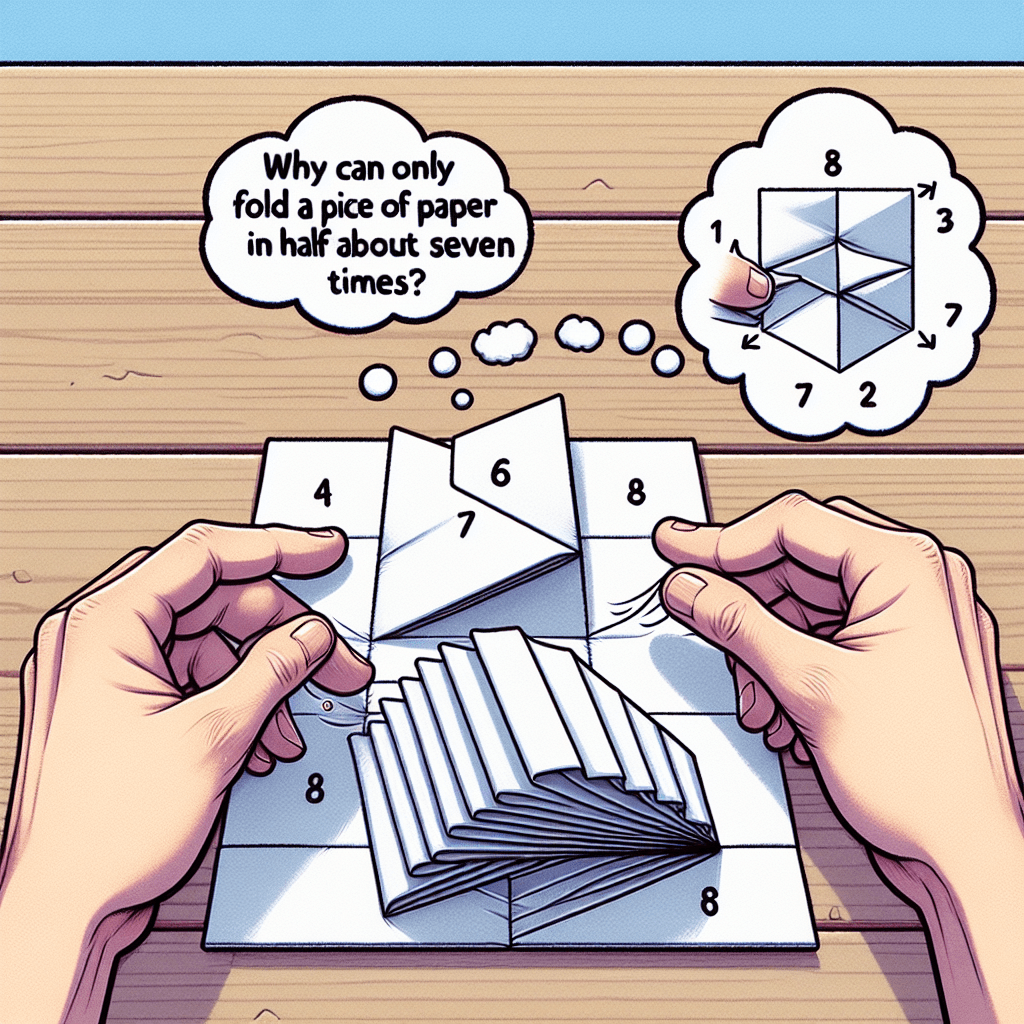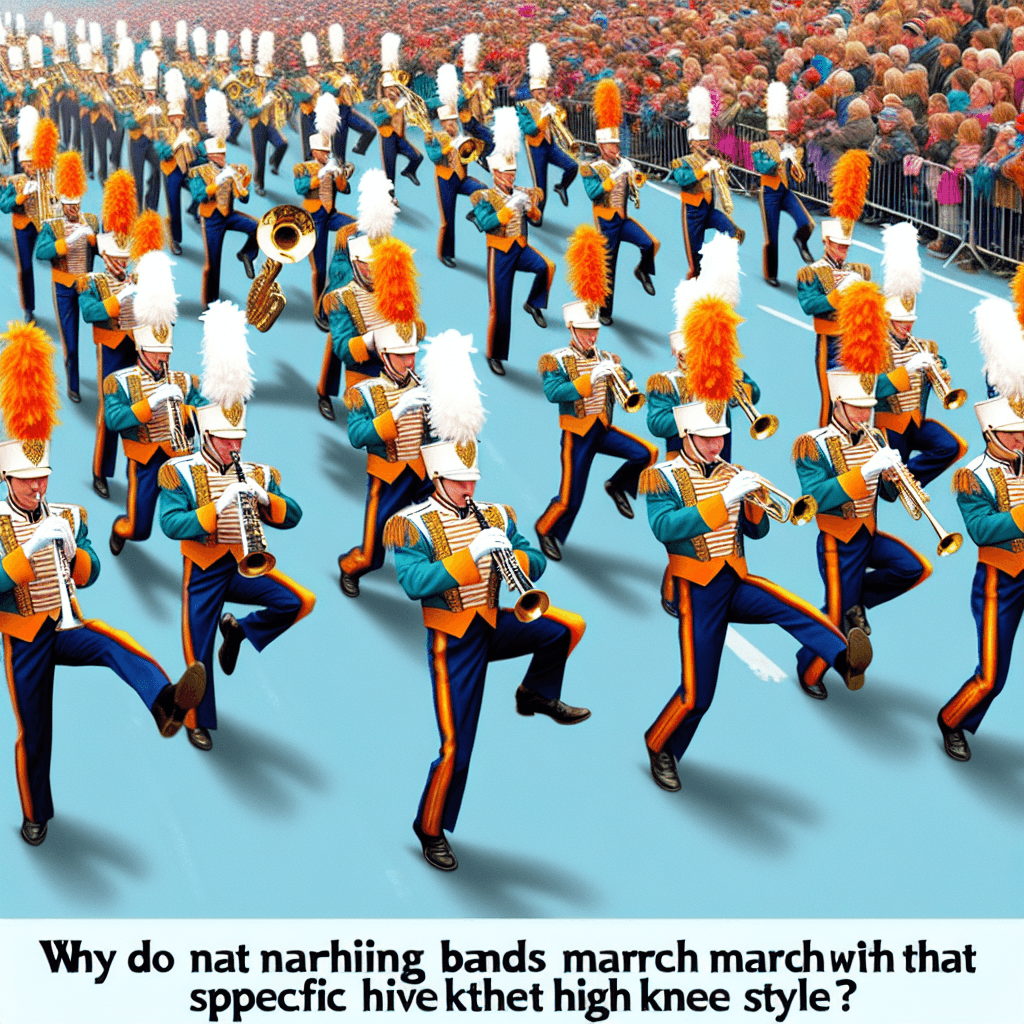Why You Can Only Fold Paper in Half About Seven Times: The Surprising Math and Physics Explained
Ever wonder why you hit a wall when trying to fold a piece of paper more than seven times? It's not a test of strength, but a fascinating demonstration of mathematical and physical limitations.


Too Long; Didn't Read
Each time you fold a paper, its thickness doubles while its length halves. After about seven folds, the paper becomes too thick and too short to make another crease, a limit dictated by exponential growth.
Why Can You Only Fold a Piece of Paper in Half About Seven Times? The Surprising Math and Physics Explained
Ever grabbed a piece of paper and tried to see how many times you could fold it in half? It’s a common childhood challenge, often met with surprising frustration. Most of us hit a wall around the seventh fold, no matter how hard we press or how thin the paper seems. This isn't just a test of strength; it's a fascinating demonstration of mathematical and physical limitations. Why can you only fold a piece of paper in half about seven times? This seemingly simple question has an answer rooted in exponential growth and the material properties of paper itself. This blog post will delve into the science behind this well-known limit, exploring exactly why your paper-folding ambitions usually stop short of double digits.
The Exponential Growth of Thickness
The primary culprit behind the seven-fold limit is the rapid, exponential increase in the paper's thickness with each fold. When you fold a piece of paper in half, you double its thickness.
- Fold 1: Thickness x 2
- Fold 2: Thickness x 4
- Fold 3: Thickness x 8
- Fold 4: Thickness x 16
- Fold 5: Thickness x 32
- Fold 6: Thickness x 64
- Fold 7: Thickness x 128
After just seven folds, the paper is 128 times thicker than it was originally. A standard piece of printer paper is about 0.1 millimeters thick. After seven folds, it would theoretically be 12.8 millimeters thick (or 1.28 centimeters), which is thicker than many books! This dramatic increase in thickness means you are no longer bending a thin sheet but trying to bend a substantial, compact block.
The Shrinking Area and Increasing Stiffness
Alongside the increasing thickness, another critical factor comes into play: the decreasing area available for folding and the corresponding increase in stiffness. With each fold, the length of the paper available for the next fold is halved (assuming you alternate fold directions, which is the most efficient way to continue folding). As the paper becomes shorter and significantly thicker, its structural integrity changes.
Imagine trying to bend a short, thick stick versus a long, thin one. The short, thick stick is much stiffer and requires considerably more force. The paper behaves similarly. The layers of paper also begin to slide relative to each other, and the inner layers have a much smaller radius of curvature to navigate than the outer layers. This creates internal stress and resistance. The paper effectively becomes too short to accommodate the radius of the bend required for its new thickness.
The Role of Material Properties
Paper isn't an idealized, infinitely pliable material. It's made of tangled cellulose fibers. These fibers have limits to how much they can be compressed (on the inside of the fold) and stretched (on the outside of the fold).
As you create more layers:
- The outermost layers must stretch significantly more than the innermost layers to go around the fold. Eventually, the paper reaches its tensile limit and either resists further stretching or would tear if enough force could be applied.
- The innermost layers get increasingly compressed.
- The energy required to make the fold increases dramatically. Your fingers simply can't exert enough concentrated force to overcome the material's resistance and create a new crease in such a dense, small object.
Essentially, the paper loses its "paperness" and starts behaving more like a solid, unyielding block.
Can the "Seven-Fold Limit" Be Broken?
The seven-fold limit is generally true for a standard A4 or letter-sized piece of paper. However, it’s not an absolute physical law for all types of paper under all conditions. In 2002, high school student Britney Gallivan famously demonstrated that the limit could be surpassed. She derived an equation that related the paper's thickness, length, and the number of possible folds. Using a very long, thin roll of toilet paper (about 1.2 kilometers long!), she managed to fold it 12 times in a single direction. Later, in 2012, students at St. Mark's School also reportedly folded a similar roll of toilet paper 13 times.
These feats required:
- Extremely long and thin paper: This provides enough material to make the folds even as the length is halved repeatedly.
- Folding in a single direction (for Gallivan's initial record): This changes the geometry slightly compared to alternating fold directions.
However, for the typical piece of paper you have on your desk, seven folds remains a very practical limit due to the reasons outlined above.
In conclusion, the inability to fold a standard piece of paper more than about seven times isn't a myth but a consequence of fundamental mathematics and physics. The exponential increase in thickness with each fold, coupled with the diminishing surface area and the inherent material properties of paper, creates an increasingly difficult challenge. While special circumstances and unconventional paper can push this boundary, the seven-fold limit remains a robust demonstration of how quickly simple actions can lead to surprisingly complex physical constraints. So, the next time you idly fold a piece of paper, you'll know exactly why your efforts eventually hit that familiar wall.
More Articles

Why do marching bands march with that specific high-knee style?
That powerful, high-knee march isn't just for show—it's a fascinating technique rooted in military history and the pure science of projecting sound across a field.

How can some turtles breathe through their butts?
It sounds like a schoolyard joke, but it's a real biological superpower. Discover the bizarre science that allows some turtles to survive a frozen winter by absorbing oxygen through their butts.

Why do some pufferfish create intricate, beautiful sand circles on the ocean floor?
Mistaken for underwater crop circles, these mesmerizing patterns are actually the work of a tiny artist on the most elaborate and romantic quest in the entire ocean.